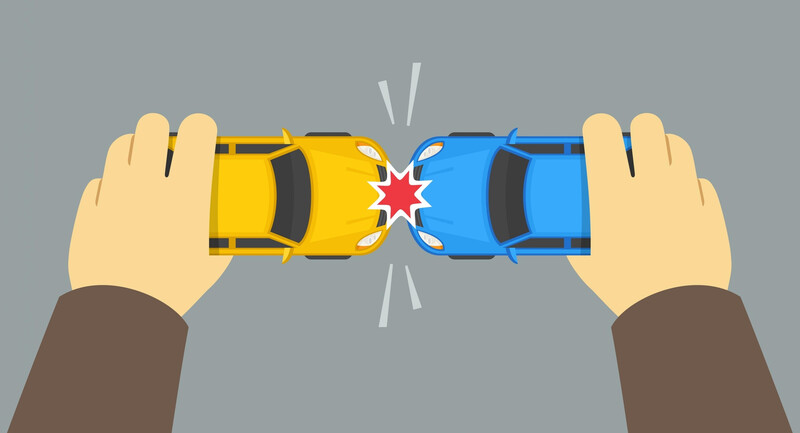As a 9th grade math teacher working with our school's most at-risk students, I'm constantly thinking of how to help students see math as a bridge to real-world applications, careers, and the larger community. I often reach out to community members and invite them to share how math is practiced in their particular field. And I've found that unlikely sources can sometimes make the most meaningful impressions. For example, you might not think my students would clamor for math lessons demonstrated by a local police officer, but that's just what happened. My school's liaison officer connected me to the local Metro East Crime Lab, where I met Trooper Brad Brachear of the Region IV Traffic Crash Reconstruction Unit of the Illinois State Police.
I had the opportunity to shadow Trooper Brachear as he applied math concepts and skills in his daily work of reconstructing vehicle crashes. I learned about the
- Various tools he uses to collect measurements, such as the air bag module also known as the car's "little black box", drag sleds, total station, trundle wheel, a 100-foot tape measure, and aerial photographs acquired with the assistance of an Illinois State Police unmanned aircraft system pilot who takes photographs of crash sites.
- Software he uses to illustrate a crash scene.
- Math formulas that can be used, along with skid marks or yaw marks, to calculate speed.
Intrigued, I invited him to come to my school to talk with my 9th grade pre-algebra students. In addition to talking about his job and background, Trooper Brachear led my students through a simple hands-on activity in our school parking lot to determine how fast a car was traveling using only tire skid marks. Measuring a given skid mark multiple times, students calculated the average and determined the length of the skid mark to be 72.46 ft.
After Trooper Brachear modeled and explained how a drag tire is used to measure force, students determined that the average force of the given 35-pound drag tire was 22 pounds.
Next, students calculated the drag factor to be .62 using the given formula:
After calculating the drag factor and learning from Trooper Brachear that he never rounds up when calculating speed to ensure that his calculations are not called into question in a court of law, students calculated the speed of the car to be 36 mph, using the given formula:
On the following day, students reflected on the activity and shared their thoughts anonymously on a student reflection form. For my students for whom school is a challenge, this math activity was "awesome," "fun," "interesting," and "not boring, like I thought it would be." Students had a positive assessment of Trooper Brachear, as well. He was "nice," "seemed cool," and "interacted with us well." They expressed an interest in seeing him again and liked how he "talked about his days on the job and how he will go out of his way to help …"
Partnering with Trooper Brachear not only helped my students connect mathematics to real life, but also helped them establish a positive relationship with a police officer. During the activity, which was conducted within a 55-minute class period, students were very engaged and eager to ask the trooper questions. In fact, at the end of class, several of my male students shared their appreciation and shook Trooper Brachear's hand before they left. Eighty-five percent of this class is made up of students of color. The national and local fractures between police and communities of color are not unfamiliar to these students; that's why the relationship element to this experience is so significant. Watching this, I realized that, although we were learning and practicing math concepts, activities like these also provide an amazing opportunity for students and police officers to build positive relationships.
Trooper Brachear's feedback on the experience echo this hope:
"I thought the experience was exceptional and I truly enjoyed the opportunity to be able to reach out and help students learn about how math can be used in the real world, specifically crash reconstruction. I believe that getting students out of the classroom and engaging them in hands-on projects whenever possible is a great way for them to learn, and judging by the way the students participated I feel this was a success. As a police officer, I feel it's too often that young people are only exposed to law enforcement in a negative setting, and I appreciated the opportunity to provide them a positive experience and let them see law enforcement in a different light."
Although citizenry is often thought of as primarily addressed in social studies classes, teachers of other disciplines should look for ways to incorporate learning opportunities that allow students to positively engage with the community. Crash reconstruction is just one topic that can connect mathematics to students with different achievement levels. By partnering with the state police and integrating crash reconstruction into their curriculum, mathematics teachers have the potential to not only help students build mathematical skills, establish connections, and learn about interesting careers, but also to help students build positive relationships with their community, including the police.



